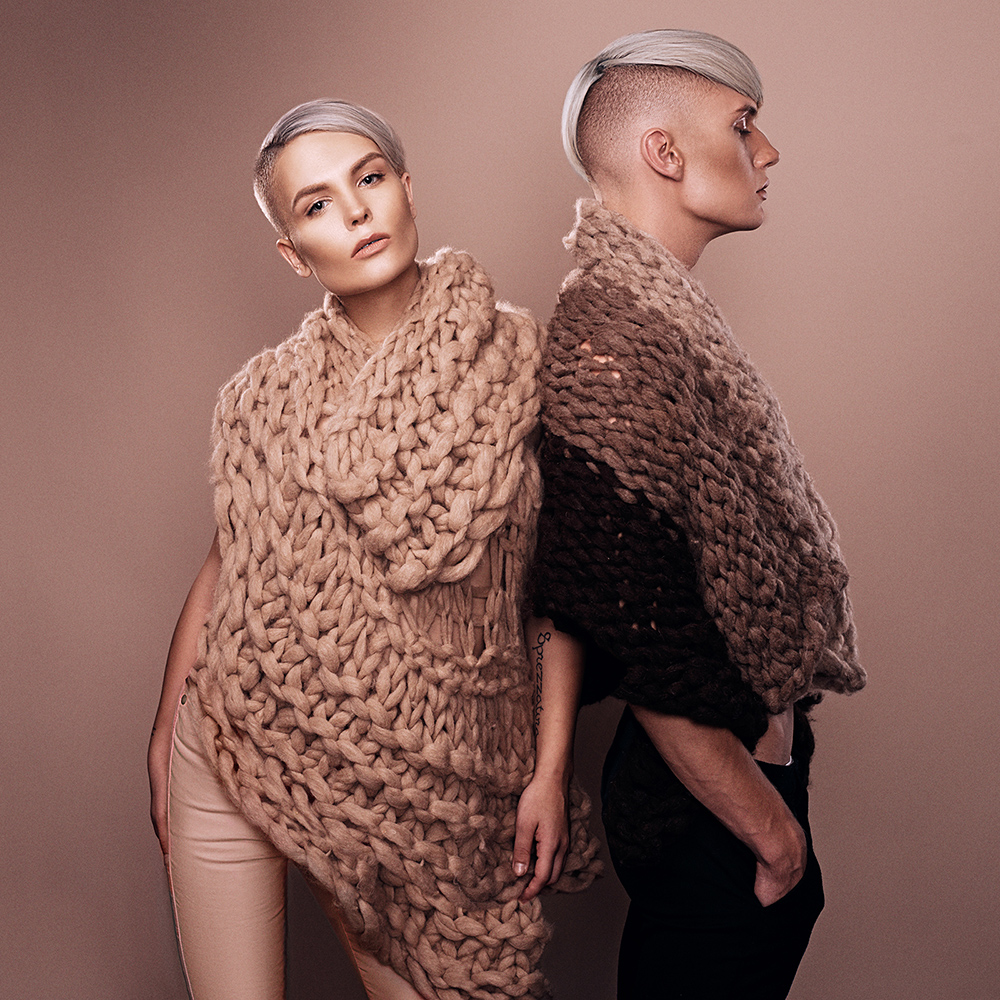User blogs
Two-spirit is a gender that is found in only North American who fulfills one of many mixed gender roles found traditionally among many Native Americans and Canadian First Nations indigenous groups. The mixed gender roles encompassed by the term historically included wearing the clothing and performing the work associated with both men and women. This English term emerged in 1990 out of the third annual inter-tribal Native American/First Nations gay/lesbian American conference in Winnipeg.
A direct translation of the Ojibwe term, Niizh manidoowag, "two-spirited" or "two-spirit" is usually used to indicate a person whose body has a masculine spirit and a feminine spirit. The term can also be used more abstractly, to designate the presence of two contrasting human spirits or two contrasting animal spirits (which, depending on the culture, might be Eagle and Coyote). Will Roscoe writes that male and female berdaches have been "documented in over 130 tribes, in every region of North America, among every type of native culture."The term berdache was coined by western anthropologists and used until the late 20th century, mainly to describe feminine Native Americans assigned male at birth.
The term is however inaccurate and can nowadays be considered offensive. Non-natives who use this identity are often accused of "appropriating Native culture." The history of two-spirits among Indigenous American culture dates back thousands, of years and has been documented in more than 130 North American tribes. Throughout history, a person who was recognized as two-spirit was someone who identified with both male and female gender roles, and so two-spirit is essentially a third gender recognized in Indigenous cultures.
The perspective among Indigenous Americans was that having this third gender was a strength their society benefited from. In the Zuni culture, a person's gender was not assigned at birth but was grown into 3 or 4 years of age. Two-spirits were not thought of as just a man or just a woman but as embodying characteristics of both genders in a single person, making them a more whole human being.

This Two-Spirits encourages the belief that, by avoiding the pressures surrounding an individual, they are capable of establishing their own identity. This identity for native Two-Spirit individuals arises from an acceptance of their native cultural values and a rejection of Western values. This rejection specifically applies to Western conventions regarding race and sexual identity as the Two-Spirit person’s identity is maintained by their sexual orientation as both male and female and their commitment to their culture or ethnicity.
Gender Fluid
Awareness of multiple genders and sexual orientation has recently taken a limelight in the media, however misconceptions and stereotypes still linger because of this. Before we start to dive into this subject matter, it is important to know simple terms such as gender, intercourse, and sexuality. Gender is what people feel within themselves, according to cultural understandings. Such as girls are soft and compassionate, whilst men are less so. intercourse is a biological term which directly refers to the genitals one was born with. Sexuality is whom one is attracted to sexually and emotionally. This may or may not align with their gender.

Gender fluid is an identity that seems to be regularly mistaken. Gender fluid refers to a gender which varies over time. A gender fluid person may at any time identify as male, female, neutrois, or any other non-binary identity, or some combination of identities. It is a gender identity which can be described as a mix of boy and girl. A person who is Gender Fluid may always feel like a mix of the two traditional genders but may feel more boy some days, and more girl other days. Being Gender Fluid has nothing to do with which set of genitalia one has, nor their sexual orientation. It is solemnly as what they feel like inside, and gender fluid people never seem to stick with a single gender identity.
Many celebrities consider themselves genderfluid, such as Miley Cyrus, Tilda Swinton, DJ Ruby Rose, and Andrej Peji?. Standards for each gender has been ever evolving, from more intense beliefs, to sneaky yet still beliefs.
One of the main misconceptions for people who are gender fluid is that their gender is nonexistent, however, an individual who is gender fluid experiences a constant shift between the gender spectrums. There are some people who fall under the Trans spectrum that do not feel dysphoric about their gender, but it is well known that most do. Gender Dysphoria is a feeling of your physical body not matching up with how you feel internally that it should be. Many people would describe the feeling of dysphoria in many different ways, though all of the ways that it is described make it clear that it is a negative feeling.
Many people who are gender fluid will date bisexual or pansexual people, those who are attracted to two genders or are attracted to people no matter what gender they are. Some people who are gender fluid will use pronouns other than he/him or she/her. Some will use the gender-neutral they/them, or another term that they choose and use regularly. Along with different pronouns, sometimes they will use gender-neutral terms for themselves while dating. Instead of having their significant other calling them their boyfriend/girlfriend, they will term such as “date mate” or even a term as simple as “partner” or “significant other”.
Many people who are gender fluid will often dress and appear as unisex or androgynous, though in some cases they will decide to mix objects that most would place within gender categories. A good example of that would be someone who decides to wear masculine appearing clothing, with makeup or another part of themselves appearing feminine.
It is recommended that when coming across a genderfluid person, that you politely ask what pronouns they would like to be referred as. Some people who experience fluid gender don't use the word "genderfluid" for themselves. Some people with fluid genders call themselves by a word such as genderqueer, bigender, multigender, polygender, or other words. This can be because the people haven't seen the word "genderfluid," or it can be because they don't think it describes them well. It's important to understand that each person has the right to decide what to call their gender identity and that they're the only one who can do that.

Some genderfluid people find that their environment does not influence their gender identity to change. They find that their gender fluidity is unpredictable and happens randomly. Other genderfluid people find that their gender changes depending on the situation, and is influenced by inside or outside sources. For genderfluid people who think their changes in gender might have to do with their menstrual cycle, they think it might be caused by how the natural hormone levels rise and fall during that cycle. It’s possible that a person might think that they tend to feel male during their periods even if that’s only rarely the case for them because the incongruence of that situation would feel noticeable and memorable.
The biggest thing to keep in mind for both sides of a relationship with someone who is gender fluid, whether that relationship is platonic or romantic, is being honest with each other about who you are and what you are looking for. Being open with a significant other can really be better for both people involved than one might think.
TransSingle present a video of Laverne Cox, a bright star, and transgender activist
How often have you seen someone exuding confidence and thought to yourself, I wish I could feel like that? Walking about feeling safe and secure in your skin, being certain of your place in the world, and your identity as an FTM transgender individual – if that seems out of your reach, you aren’t alone.
Chances are, you want to not simply survive but thrive as a trans guy, both in private and on online dating sites for transgender folks and allies. While there are many tools you need to have in your metaphorical self-care kit, building confidence is chief among them.
What exactly is confidence?
Before we dive into a list of tips and suggestions on how you can build it, we first need to define what we mean when talking about confidence. Self-confidence often overlaps or is used as a synonym for self-esteem or self-efficacy. While there are similarities, it is interesting to note the differences, too:
– Self-efficacy:
Refers to your belief about your own abilities regarding specific tasks. Self-efficacy basically is the real-life concept that corresponds with the famous Henry Ford quote: “Whether you think you can, or you think you can’t – you’re right.”
– Self-confidence:
Meanwhile, reflects your general belief about how likely you are to fulfill a goal. Your past experiences play a huge role in both self-efficacy and self-confidence, but self-confidence refers to a broader view instead of focusing on specific tasks.
– Self-esteem:
While often used interchangeably with self-confidence, is quite different from it. Self-esteem reflects your belief in your overall worth as a person. Viewing yourself as a “good guy” is a statement of self-esteem, for instance. In that, it is even broader than self-confidence, and improving your confidence will help your esteem, too.
Obviously, the lines between them are blurry, and there is no linear trajectory you can follow. You may have enough confidence to think you’re capable of learning to make bread, yet at the same time lack self-efficacy and you assume your first attempts will be horrible. And whether or not you can bake a killer loaf, you hopefully still think that you deserve love and happiness.
Why is building confidence essential for FTM trans guys?
Insecurities and self-doubt are core components of ill mental health and poor well-being, so finding ways to improve your confidence will definitely help you.
As a trans guy, whether you identify as FTM, genderqueer, nonbinary butch, or else, building self-confidence can be especially tough. Questioning societal standards and stereotypes of what it means to be “manly” and finding your own way takes a lot of energy, perseverance, and yes, confidence.
So how do you build it? Think of it as a muscle: you need to train it to strengthen it.
Here are several useful tips you can choose from and try for yourself. See what works for you and maintain it until it becomes second-nature to you. Your confidence will never falter again.
Understand Your Strengths and Weaknesses
Even if the mean voices in your head (or on the internet) want to tell you otherwise, everyone has unique skills, both hard and soft, as well as talents in various areas of your life. Likewise, you will have areas in your life you do not excel at.
While many of these will remain the same after your female-to-male transition, some may have changed. As a rule of thumb, make sure that you know what you are good at and what your weaknesses are. Once you understand these areas, you will have a clearer mental image of yourself and what you will need to improve your self-confidence.
Be a Friend to Yourself
Unfortunately, some FTM trans men are their own worst enemy. It is impossible to build your self-confidence if you are the one constantly putting yourself down. If you want confidence and high self-esteem, you need to foster an attitude of love and acceptance.
When a negative thought arises, ask yourself: “Would I say this to about my best friend to their face?” Catching yourself when your inner voice turns self-deprecating is the first step to stop the habit. Once you notice it, actively work against it. If you think, for example, “I didn’t manage all I wanted to do today, I’m such a loser”, and notice it, tell yourself that you are human and some things take more time than anticipated. You tried, and that’s what’s important.
Remember and Celebrate Your Successes
Please steer clear of grievous mistakes like downplaying your success or only focusing on what you are struggling with. Such an attitude will not help you build self-confidence. Focusing on the negative aspects of your life will only drag you further down. However, if you create a habit of celebrating your successes (no matter how small they are), you will soon feel more confident.
These celebrations can take various forms: taking a walk for yourself, giving yourself a break to enjoy a cup of tea or coffee, spending time with a friend to cheer for your achievement, or simply giving yourself the satisfaction of crossing the item off your to-do list for the day.
Remove Things That Bring You Down
Out of sight, out of mind – this affects reminders of your shortcomings or of negative experiences as well. Be sure to hide or get rid of items that evoke negative thoughts when you see them.
Beyond the shirt you wore to that horrible breakup, these things can be as varied as mean friends, a job you hate, or a habit you have gotten into. Reflect on the impact these have on your life and eliminate them for good.
Smile At Yourself In The Mirror
Looking at your reflection can go a long way in helping you accept yourself. When you do, be sure to smile. If you do this every day, you will feel happier and more secure in yourself over time due to something called “facial feedback theory”. The expression on your face has been shown to help your brain register and intensify the emotions it perceives on your face.
Improve Your Posture
Just like smiling at yourself, sitting up straighter, or striking a “power pose” has been proven to boost confidence in studies. It might feel awkward at first, but remember that stepping outside your comfort zone is a core component of your journey towards more self-confidence.
Do Not Compare Yourself To Others
Every person is unique. Just because this FTM person achieves a very masculine appearance and maybe has better muscle definition than you does not mean you have ‘failed’ at being FTM. You differ in your genetics, your socio-economic backgrounds, and much more – focus on yourself and don’t measure your progress against that of others. Easier said than done, sure, but so essential to keep in mind.
Take Risks
There is no better way of building self-confidence than taking risks. Taking risks shows – mainly to yourself – that you are confident in yourself and your abilities. If you now think you have to do something scary or dangerous to achieve this, think again: Simply getting out of your comfort zone and trying something new counts as a risk in terms of building self-confidence.
In essence, this point is all about living your life to the fullest. Take a moment to reflect on what you would like to try and do. Learn how to skateboard? Sign up for a transgender dating site? Strike up a conversation with a friendly-looking stranger? Sure, you might find that you do not like the outcome of something you do, but you may forever regret not giving yourself the opportunity to try. Your self-confidence will definitely thank you!
Be Persistent
At the end of the day, there is no miracle cure for low self-confidence. There is no pill you take or action steps you follow once and overnight, you are filled to the brim with confidence. It truly takes time and effort to build up. Therefore, you should be persistent, see mistakes your make as learning opportunities to help you avoid repeating them in the future, and never give up. If you lose sight of the journey, don’t beat yourself up. Life happens, we get busy. Simply get back on track and resume your self-confidence practice.
On a final note, if you are struggling with self-confidence and do not know where to start, find a trusted friend with whom you can share your troubles. Having a strong support system will help you be more confident and give you the foundation you need to begin building confidence on your own.
Get ready for the most fun you’ve had in forever! Once you feel confident enough, it’s time to sign up for an ftm dating site. There are many transgender dating apps out there, and platforms that facilitate online dating for trans women, men, and others have increased. You have ample space to search for other trans singles or trans allies who are looking for a serious relationship.
If chatting with potential dates is outside your comfort zone… treat it as practice for your self-confidence boosting journey! You might find the perfect partner without expecting to.
Isis King is an American actress, fashion designer, and top model. Isis was assigned male gender at birth. However, she has stated that individuals may allude to her as transgender. She was the first transgender female to content on the show and became one of the most visible trans individuals on TV.
Isis King had been runway modeling for a long time before partaking in America's Next Top Model. Isis is one of a small but growing number of transgender people and characters in film and television, and her inclusion on America's Next Top Model has been called an "unprecedented opportunity" by Neil Giuliano, president of Gay and Lesbian Alliance Against Defamation. By contending on the show, she has focused on national and prime time issues of sensual orientation changing and intercourse expression.
New York magazine noted that King is one of few transgender models in history to rise to public prominence, comparing her to Teri Toye, former club kid Amanda Lepore, and the gender-bending club promoter and model Andre J. Isis King is a practicing Christian and attends Mosaic Church in Los Angeles.
For trans women, looking masculine can really take a toll on mental health and overall happiness. The persons around you may knowingly or unknowingly refer to you as "he" or "him" simply because of the way you look. But a beard, large arms or flat chest doesn't make you any less of a woman than a girl with big boobs and broad hips. For personal reasons, you may opt to not get gender reassignment surgery and that is completely fine. It is your life and you should live it the best way you see fit. Here are a few ways to make yourself look less masculine without getting “the surgery”
Making Your Face Appear Less Masculine
If your face looks too masculine, people will assume you are a man. One way to beat this is by completely removing all facial hair, except for your eyebrows. Your eyebrows should be shaved, tweezed, waxed or plucked. After all, they are the frame of your face and can make or break your entire look. Makeup is a great option for making your skin appear smoother, highlighting certain features and hiding others. But be sure to buy quality brands and get a lot of practice before going out into the world. And, if done properly, there's no way to tell that you are a MTF trans woman. You can also grow out your hair or add extensions to feminize your face. The right hairstyle can make that chiseled face look less pronounced and improve your overall appearance.
Making Your Hands Appear Less Masculine
When you look at or feel a woman's hands, generally they are smooth and soft to the touch. If you want to appear less masculine your hands are one part of the body that you must pay keen attention to. One way to make your hands appear less masculine is by moisturizing and conditioning the skin on your hands. This will over time soften the way your hands feel. Some great moisturizers are Coconut oil, Cocoa butter, Argan oil, and Jojoba oil. Another way to feminize your hands is by getting pedicures. Women are expected to have neat, attractive fingernails and by getting a pedicure the overall appearance of your hands will surely be less masculine. You may also get acrylic nails or gel polish styles that are in style now.
Lastly, jewelry is another way that is sure to make your hands appear less masculine. From rings to bracelets to bangles, there is an unlimited supply of jewelry that you can choose from in many different shapes, sizes, colors and designs at varied price points.
Wearing Feminine Clothes
Wearing feminine clothes is a big step in any trans woman's life. The right clothes can boost your confidence and make the people around you more accepting of you. Dresses, skirts, and heels are great options but if you are shy, try feminine jeans or blouses. There are many other ways to make yourself appear less masculine without having gender reassignment surgery. Hopefully, these tips help!

